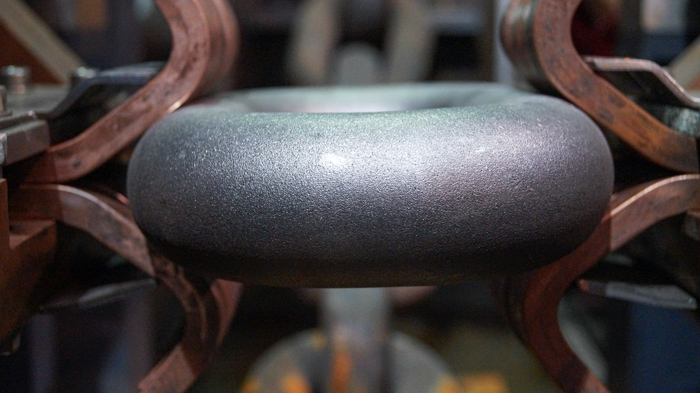Automatic tempering and hardening of the joining element
SLT | SINGLE LINK TREATMENT
Why thigh annealing?
When chains are manufactured continuously in strands, there is a requirement that these strands must be joined together. This is done by integrating joining links. However, these joining elements are not quenched and tempered. And as is well known, a chain is only as strong as the weakest link. The task is therefore to temper this link without affecting the properties of the rest of the chain. For this purpose, we developed the single link tempering process. This is used for chain links from D18 to D60.
method and plant-technical design
With this method, a chain with a transport system is inserted into the system. The integrated sprockets are adapted to the corresponding chain size by means of inserts.
The loading can be carried out via a crane system or via two individual servo-controlled drive wheels. The heating of the chain link is conductive. The chain is clamped in copper jaws and heated with a current of up to 40,000 A. The chain is then heated with a current of up to 40,000 A. The chain is then heated with a current of up to 40,000 A. The system design makes it possible to thermally separate the existing chain strands and to eliminate any influence as far as possible. As with the SCT continuous chain tempering process, the individual link is first heated to a hardening temperature of 920 °C. The chain is then heated to a temperature of 920 °C. This is the temperature at which the chain is hardened and tempered. The entire unit is then quenched and tempered by lowering it into an immersion tank. The entire unit is integrated on a frame system, which is equipped with counterweights and also servo-driven. The quenching basin, typically filled with water, contains additional nozzles which ensure a high water flow around the hot chain link. This is essential to prevent the formation of bubbles on the chain surface and thus the formation of an insulating layer. The link is then heated to tempering temperature and cooled using the same process. Quality assurance is performed by three integrated pyrometers, which ensure process parameters.
Range of services
The system is offered in two different sizes and is available in a manual or semi-automated version. This enables precise transport of the chain and thus positioning of the link on the contact jaw. The conduction requires a good contact at the chain link. It is therefore necessary to remove the additional layer from the chain surface at the contact point before tempering (second heating step). This step is done manually.
You are interested, have questions or suggestions?
Our team is at your disposal. We look forward to your message!
Zunftstr. 20 | 77694 Kehl-Marlen | DE

Related products:

Useful links
Contact